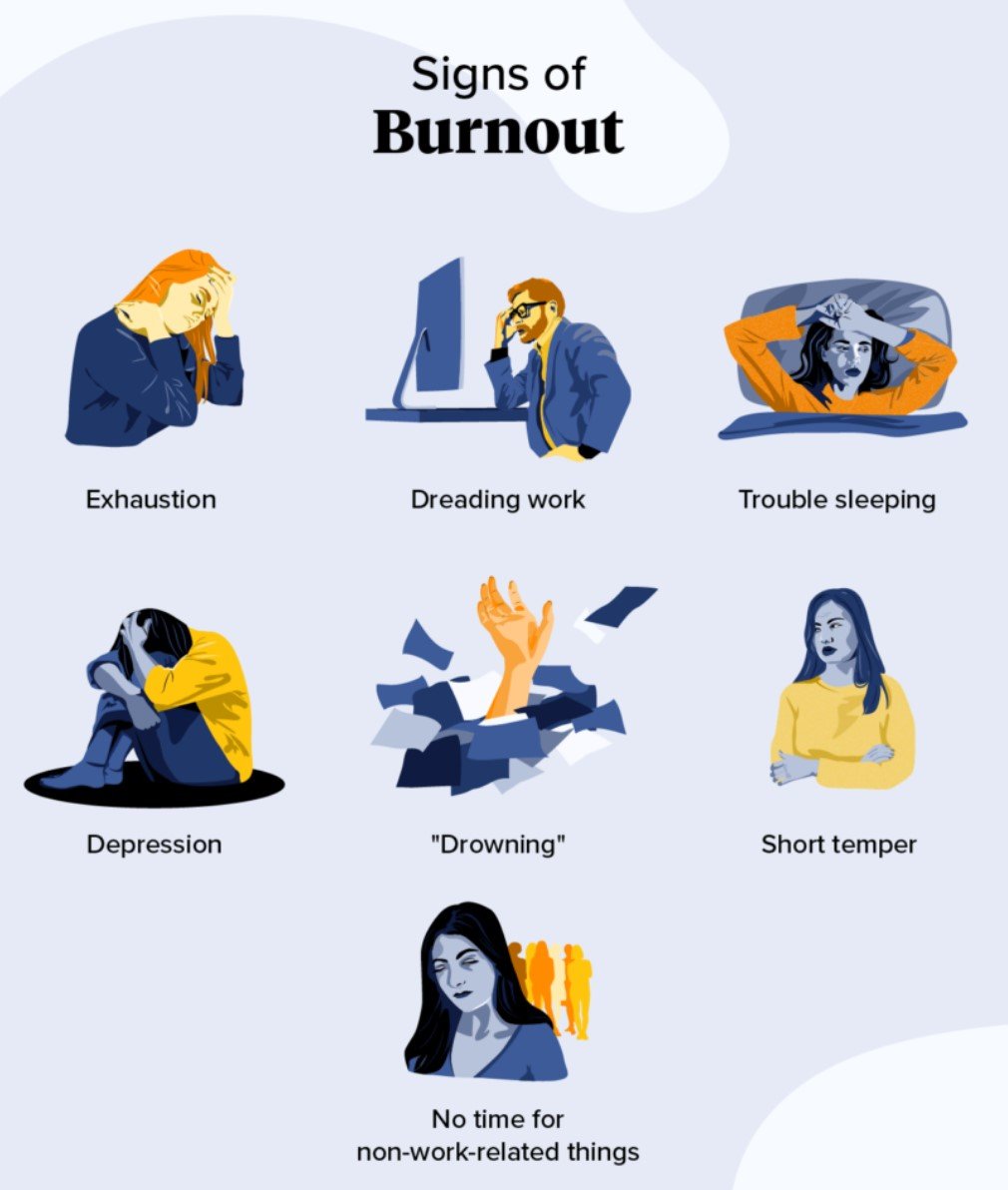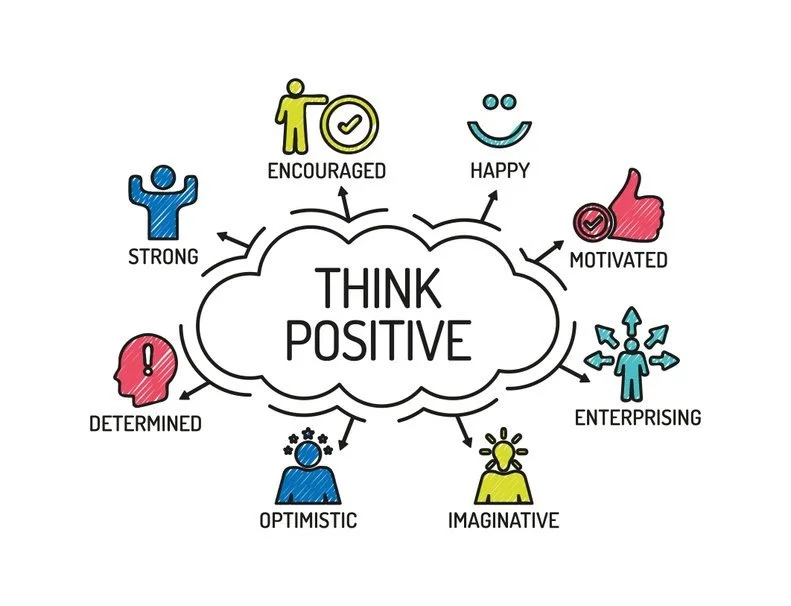Can Daily Self-Check-Ins Fuel Endurance? How I Rowed Non-Stop for 3 Days and 11 Hours!
Can Daily Self-Check-Ins Fuel Endurance? How I Rowed Non-Stop for 3 Days and 11 Hours!
In the hustle and bustle of our fast-paced lives, it's easy to neglect our own well-being. We check in with friends, family, and colleagues, but how often do we truly check in with ourselves? Whilst I was on a solo indoor rowing world record on a Concept2 I learnt the importance of daily check-ins for our mental health and in this blog, I will present various formats that can benefit our overall well-being. Discover the transformative effects of self-awareness and learn how to prioritize your mental health through simple daily practices.
The Need for Daily Check-ins
The Fast-Paced Nature of Modern Life
In today's fast-paced world, it has become more crucial than ever to prioritize regular self-check-ins. The relentless nature of modern life, characterized by constant stimuli, information overload, and increasing demands, takes a toll on our well-being. Taking the time to pause and check in with ourselves allows us to counteract the negative effects of this fast-paced lifestyle.
Studies have shown that regular self-check-ins positively impact our mental and emotional well-being. A study conducted by Burke, Moore, and Linley (2017) examined the impact of self-reflection and self-care practices on stress and well-being among healthcare professionals. The researchers found that participants who regularly engaged in self-reflection activities, such as journaling, mindfulness, and meditation, reported significantly lower levels of stress, anxiety, and burnout compared to those who did not engage in such practices.
During my endurance world record row in 2018, daily check-ins were crucial for several reasons:
Monitoring Physical Well-being: Endurance challenges push our bodies to their limits. Daily check-ins allow you to assess your physical well-being, including monitoring any signs of fatigue, muscle soreness, or potential injuries. This self-awareness enables you to make informed decisions regarding your training intensity, rest, and recovery, helping to prevent overexertion or potential harm.
Managing Mental Fatigue: Endurance challenges not only test our physical stamina but also challenge our mental resilience. Daily check-ins provide an opportunity to assess your mental state and monitor signs of mental fatigue, burnout, or decreased motivation. By acknowledging and addressing these factors, you can implement strategies to maintain mental focus, motivation, and overall well-being throughout the endurance challenge.
Adjusting Strategies: Daily check-ins allow you to evaluate the effectiveness of your training, nutrition, and hydration strategies. By reflecting on your performance, energy levels, and recovery, you can make necessary adjustments to optimize your approach. This continuous feedback loop helps you fine-tune your tactics, ensuring that you are maximizing your potential and minimizing any potential setbacks during the endurance challenge.
Celebrating Milestones: Endurance challenges can be gruelling, but they also present opportunities for personal growth and achievement. Daily check-ins provide moments to acknowledge and celebrate your progress, milestones, and small victories along the way. Recognizing and appreciating these milestones can boost your motivation, confidence, and overall well-being, helping you stay focused and committed to your goals. This photo below is me smiling after I surpassed the previous world record!
The Implications of Neglecting Self-Reflection
Neglecting self-reflection can have significant implications on our personal and professional lives, leading to various negative outcomes, which definitely could have put a stop to my world record endurance row. Research and real work examples highlight the importance of self-reflection in fostering growth, well-being, and success.
Reduced Self-Awareness: Neglecting self-reflection limits our ability to gain deep insights into our thoughts, emotions, and behaviours. This lack of self-awareness can hinder personal development, prevent us from identifying areas for improvement, and limit our potential for growth. A study conducted by Kaplan and Kaiser (2006) found that individuals who engaged in self-reflection demonstrated higher levels of self-awareness, which positively influenced their decision-making and interpersonal relationships.
Increased Stress and Burnout: Failing to engage in regular self-reflection can contribute to higher stress levels and increased risk of burnout. Research by Taranaki (2019) indicates that employees who neglect self-reflection are more susceptible to chronic stress and are less equipped to manage work-related challenges effectively. This can lead to decreased job satisfaction, reduced productivity, and compromised mental well-being.
Impaired Problem-Solving and Decision-Making: Self-reflection plays a crucial role in enhancing critical thinking, problem-solving, and decision-making skills. When we neglect self-reflection, we may rely on autopilot thinking or repeat ineffective patterns. A study by Yaniv, Kleinberger, and Nadav-Greenberg (2013) demonstrated that individuals who engaged in structured self-reflection exhibited higher levels of cognitive flexibility, leading to more effective problem-solving strategies.
Stagnation and Lack of Personal Growth: Without self-reflection, we risk remaining stagnant and missing opportunities for personal growth. By examining our experiences, strengths, and areas for improvement, we can set goals and work towards self-improvement. Real work examples, such as companies promoting a culture of reflection and learning, have shown increased employee satisfaction, innovation, and adaptability. For instance, Google's practice of encouraging employees to engage in regular self-reflection and share lessons learned has contributed to its success as an innovative company.
Emotional Burnout and Mental Health Risks
Emotional burnout and mental health risks are prevalent in today's demanding work environments with so much technology being used on the rise it can be easy to neglect your own health. Neglecting self-reflection exacerbates these challenges, leading to severe consequences for individuals and organizations. Research and real work examples shed light on the extent of emotional burnout and its impact on mental health.
High Rates of Emotional Burnout: A study conducted by Gallup (2018) found that 23% of employees reported feeling burned out at work very often or always, while an additional 44% experienced burnout sometimes. This alarming statistic highlights the widespread nature of emotional burnout in the workplace.
Decreased Job Satisfaction and Productivity: Emotional burnout negatively affects job satisfaction and performance. According to a survey by Deloitte (2020), burnout reduces productivity by 57%. Employees who experience burnout are more likely to disengage from their work, exhibit decreased motivation, and have lower job satisfaction. This not only impacts their well-being but also affects overall organizational productivity.
Increased Absenteeism and Turnover: Emotional burnout contributes to higher rates of absenteeism and turnover. Research by Maslach, Schaufeli, and Leiter (2001) indicates that burnout is a significant predictor of employee turnover intentions. When individuals experience emotional exhaustion and feel overwhelmed, they are more likely to seek alternative employment or take sick leaves, resulting in costly disruptions for organizations.
Real Work Examples and Initiatives: Several organizations have recognized the importance of addressing emotional burnout and promoting mental well-being. For instance, Microsoft implemented a well-being program that encourages employees to engage in self-reflection, mindfulness, and stress reduction activities. As a result, they reported a 7% decrease in employee burnout symptoms. Furthermore, companies like Google and Facebook have introduced mindfulness and well-being initiatives to combat burnout and enhance mental health among their workforce.
The Different Types of Daily Check-ins
A Gratitude List: Cultivating Positivity and Appreciation
I found this really effective to write during my endurance challenge when i had a 2-minute loo break! I kept a gratitude journal on my notes on my phone to keep myself motivated and self-reflective! Here is what my list looked like below.
Creating a gratitude list is a powerful practice that helps cultivate positivity, appreciation, and a greater sense of well-being. Follow these steps to create your own gratitude list:
Set Aside Dedicated Time: Find a quiet and comfortable space where you can focus on your gratitude list without distractions. It could be in the morning, during a break, or before bedtime—choose a time that works best for you.
Reflect on the Positive: Take a few deep breaths to centre yourself and shift your focus to the positive aspects of your life. Begin by reflecting on the things, experiences, or people that you feel grateful for.
Start Small and Specific: Begin by listing three to five things that you are grateful for. Start with the simple things, such as a beautiful sunrise, a delicious meal, or a supportive friend. Be as specific as possible to truly appreciate the details and nuances.
Dig Deeper: As you progress, challenge yourself to go beyond the obvious and explore deeper layers of gratitude. Reflect on personal qualities, achievements, opportunities, or lessons learned that have positively impacted your life.
Write It Down: Grab a journal, a piece of paper, or create a digital document—whatever works best for you. Write down your gratitude list, using clear and concise language. You can use bullet points, and sentences, or even create a gratitude journal.
Be Consistent: Make gratitude a regular practice. Aim to create a gratitude list daily, weekly, or whenever you feel the need for an uplifting perspective. Consistency will help reinforce the positive mindset and make it a natural part of your routine.
Reflect and Revisit: Take moments to reflect on your gratitude list. Revisit it periodically to remind yourself of the things you appreciate and to bring back the positive emotions associated with gratitude.
Remember, the purpose of a gratitude list is to cultivate an attitude of appreciation and shift your focus towards the positive aspects of life. It can be as simple or elaborate as you wish—there are no right or wrong answers. Find what resonates with you and embrace the practice with an open heart.
Affirmations: Harnessing the Power of Self-Love and Positive Mindset
Affirmations are a powerful tool for harnessing the power of self-love and cultivating a positive mindset. From a personal standpoint, I needed to physically say positive self-love words out loud during my row to foster a positive mindset and it worked a treat! Research and real work examples demonstrate the effectiveness of affirmations in enhancing well-being, productivity, and overall success.
Boosting Self-Confidence and Self-Esteem: Affirmations help in cultivating a positive self-image and boosting self-confidence. A study by Wood, Perunovic, and Lee (2009) found that self-affirmations led to increased feelings of self-worth and reduced self-threat. By repeating positive statements about ourselves, we reinforce our self-belief and develop a stronger sense of self.
Shifting Mindset and Overcoming Limiting Beliefs: Affirmations challenge and replace negative self-talk and limiting beliefs with positive and empowering thoughts. This shift in mindset enables us to reframe challenges as opportunities for growth and cultivate a can-do attitude. Real work examples, such as companies implementing affirmation programs, have witnessed improved employee performance, resilience, and innovation.
Enhancing Resilience and Stress Management: Affirmations contribute to building resilience and managing stress. Research by Luthans, Avolio, and Avey (2007) found that positive self-affirmations increased psychological capital, including self-efficacy, optimism, hope, and resilience. This allows individuals to navigate stressful situations with greater ease and bounce back from setbacks more effectively.
Improving Performance and Goal Achievement: Affirmations have been linked to improved performance and goal achievement. A study published in the Journal of Experimental Social Psychology (Sherman et al., 2013) showed that self-affirmations positively influenced academic performance, reducing performance gaps between different demographic groups. By affirming our capabilities and strengths, we create a positive mindset that supports us in reaching our goals.
Real Work Examples and Initiatives: Companies like Intel and LinkedIn have incorporated affirmations into their workplace culture and employee development programs. These initiatives aim to foster a positive and growth-oriented mindset among employees, resulting in improved job satisfaction, motivation, and overall performance.
Mood Tracking: Enhancing Self-Awareness and Identifying Patterns
Mood tracking is a valuable practice that enhances self-awareness, helps identify patterns, and promotes emotional well-being. I have used digital mood-tracking apps like FormScore.
By monitoring our moods, we can gain insights into our emotions, recognize triggers, and make informed decisions to support our mental health.
Personal Mood Journals: Keeping a mood journal is a popular way to track and analyze emotions. This involves recording your daily moods, noting any significant events or circumstances, and reflecting on the factors that influence your emotional state. By consistently tracking your moods, you can identify patterns, triggers, and patterns of positive and negative emotions.
Digital Mood Tracking Apps: Mobile applications like Daylio, Moodnotes, Sanvello, Wysa, and eMoods provide convenient platforms for mood tracking. These apps allow users to log their emotions, track patterns over time, and generate insights through visualizations and data analysis. Celebrities like Demi Lovato and Dwayne "The Rock" Johnson have openly shared their use of mood-tracking apps to manage their mental well-being.
Workplace Mood Tracking: Some companies have embraced mood tracking as part of their employee well-being initiatives. For instance, Virgin Pulse, a global well-being solutions provider, offers a mood-tracking feature in their employee wellness programs. This allows employees to monitor their moods, access resources for stress management, and seek support when needed. Such initiatives help organizations foster a positive work environment and support employees' emotional well-being.
Celebrity Advocacy: Celebrities like Oprah Winfrey and Lady Gaga have spoken openly about the importance of mood tracking in managing their mental health. Their advocacy has helped raise awareness about the benefits of mood tracking and destigmatize conversations surrounding mental well-being.
Identifying Patterns and Seeking Support: Mood tracking enables individuals to identify patterns and triggers that influence their emotional well-being. By recognizing these patterns, individuals can proactively implement self-care strategies, seek support from therapists or mental health professionals, and make informed decisions to maintain their mental health.
Finding Time for Daily Check-ins
Scheduling: Committing to Self-Care Through Calendar Management
During my indoor row, I made sure to schedule a check-in with myself after every rowing shift, so in the 5-minute allocated breaks of each hour. When you are not on an endurance world record row one effective way to ensure daily check-ins is to schedule them in your calendar. Treat these check-ins as important appointments with yourself. Choose a specific time slot that works best for you, whether it's in the morning, during lunch break, or before bedtime. Set a recurring reminder on your calendar to prompt you to engage in your check-in practice. By blocking out dedicated time for self-reflection, you prioritize your well-being and make it a non-negotiable part of your day.
Habit Stacking: Leveraging Existing Habits for New Behaviors
After about 10 rowing hours I made this self-check-in process a habit for when I came off the machine but you can do this in other ways. Habit stacking is a powerful technique that involves connecting new behaviours with existing habits. Identify a habit you already perform consistently, such as brushing your teeth or making a cup of coffee, and pair it with your daily check-in. For example, commit to doing your check-in right after brushing your teeth in the morning. By linking it to an existing habit, you leverage the automaticity of the established behaviour and increase the likelihood of successfully incorporating daily check-ins into your routine.
Technology-Assisted Approaches: Exploring Apps for Well-being Support
In today's digital age, there are numerous apps available that can support your daily check-in practice. These apps provide a range of features, including guided reflections, mood tracking, gratitude journaling, and mindfulness exercises. Explore apps like Headspace, Calm, or Reflectly, which offer tools and resources to enhance your self-reflection and well-being journey. Set notifications or reminders within these apps to prompt your daily check-in, ensuring you stay consistent and engaged with your practice.
Accountability Buddies: Strengthening Check-in Habits Through Friendship
During my indoor row, I found my partner at the time was my accountability buddy for doing a check-in after each shift and it really worked! Having an accountability buddy can greatly enhance your commitment to daily check-ins. Find a friend or family member who shares a similar interest in personal growth and well-being. Establish a check-in routine together, where you both engage in self-reflection and share your experiences. You can hold each other accountable by checking in regularly, sharing progress, and providing support and encouragement. The presence of an accountability buddy creates a sense of shared commitment and reinforces the importance of daily check-ins.
There you have it, introducing daily check-ins is a powerful tool to tune in to your own emotions, thoughts, and needs. By dedicating moments of self-reflection, you can gain deeper self-awareness, understand areas for improvement, and make meaningful changes in your life. Whether you choose gratitude lists, affirmations, journaling, or mood tracking, find the approach that resonates with you and commit to prioritizing your mental health. Embrace the transformative journey of daily check-ins and unlock the true potential of self-awareness and well-being. I am certain that the check-in reflection process was one of the many reasons I had the edge and broke this indoor rowing world record on the Concept2 indoor rowing machine.
Learn more about these tips for your team at one of my high-performing keynote talks or team wellbeing keynote talks. Contact for me details…








